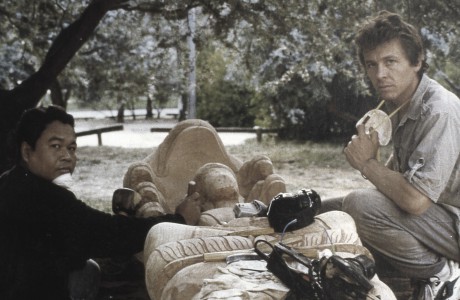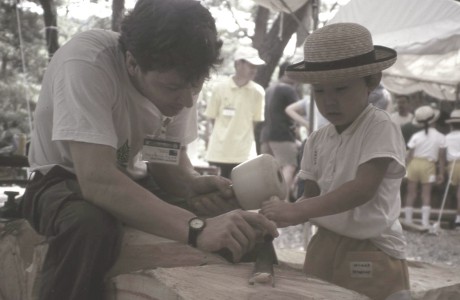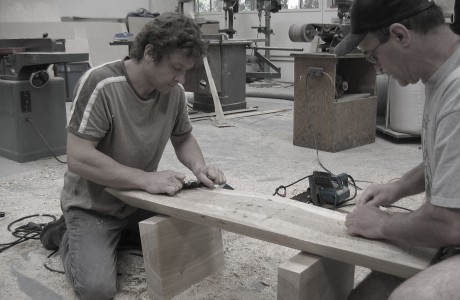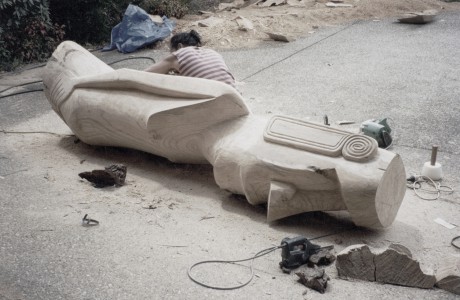The international language of skills


Creativity is a natural lead to cross-cultural collaboration. Throughout my career I have traveled to countries and communicated with foreign speakers purely through artistic expression and the common language of our skilled hands.
My early travels to New Guinea in 1980 exposed me to the carvers of the Sepik River, then to New Zealand in 1980 where I watched Maori carvers at work in Rotorua. This language of hand skills is part of the cultural fabric and spirituality of many traditional cultures and I could see how aspects of these cultures would disappear if these physical and material forms of expression were lost or discontinued.
In 1993 I had the rare opportunity to travel and meet with many of the first generation of Shona stone sculptors in Zimbabwe, a relatively contemporary form of artistic expression that sprang from deep cultural roots akin to what has taken place in the desert region artists of Australia. In the following year further travels took me to Cambodia. Intended as a sightseeing holiday to visit the amazing temples ruins of the great Khmer empire, I became involved with the carving department of the University of Phnom Penh, sitting and carving daily for two months with the teachers and students, exchanging knowledge and being taught some of the finer traditions of their carving and sense of proportion. The mornings were also spent teaching carving to street kids at an NGO, constructing makeshift workstations out of plywood for the children sit and work on.
Cambodia was a dangerous and inspiring place to be at that time. I sought ways to bring the head-carving teacher from the university of Phnom Penh to the Canberra School of Art. Nat Chun Pok arrived in 1995, where we collaborated for several months on traditional style carving, a two meter high Buddha seated on Naga and two large carved relief panels of dancing Apsara in the style of Angkor Wat. The Buddha sculpture and the two carved panels were acquired by the Australian National University.
In 1998 I received a Churchill Fellowship to travel to Europe for the first time where I spent time carving marble in Italy alongside the famed stone artisani of Pietrasanta, then onto Bavaria where I worked with a German wood sculptor, Peter Whirshing, followed by numerous studio visits to sculptors, carvers and designers in the UK and USA.
In the same year I was asked to facilitate a group of carvers from Easter Island for a multi cultural festival in Canberra, working alongside the carvers over a two-week period to produce a 3m high Moai statue that now resides in the ACT Assembly.
Since then I have represented Australia at the Inami International Wood sculptors Symposium in Japan in 1999 and participated in two international artist Collaborations in Emma Lake Canada in 2000 and 2004 and similarly, CollaboratioNZ in New Zealand in 2001 and 2005. I have also participated in an International Wood Artist Exchange in Philadelphia in 2004 and a guest speaker at the Annual Furniture Society Conference in Savannah the same year. And in 2005 I was the recipient of the Inaugural Sem Scholarship, spending another three months carving marble at Studio Sem in Pietrasanta, Italy.

